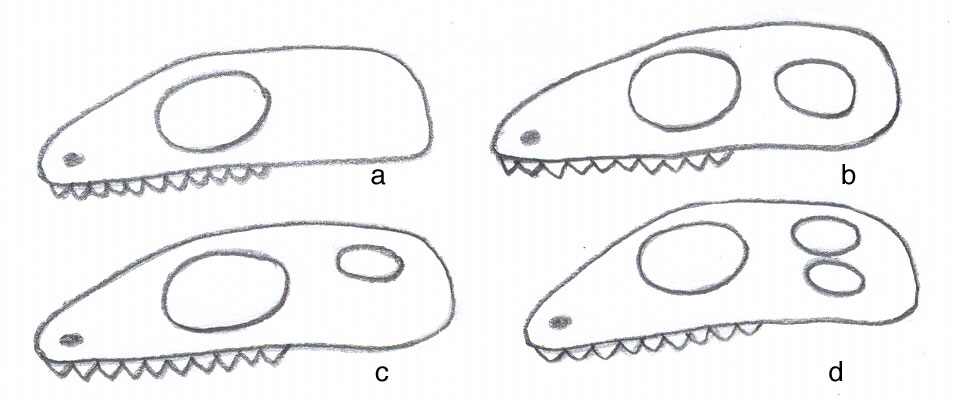The last 65 million years have sometimes been called ‘the Age of Mammals’ (although I’m inclined to think it should be the Age of Insects, or perhaps – as it’s always been – the Age of Bacteria; after all, in terms of sheer number of individuals, bacteria have got to be the dominant life form on the planet…). This gives the impression that mammals are a relatively recent evolutionary novelty. But just how old is this class of organisms? Just what is the ‘age’ of the mammals?
Mammals began to diversify after the mass extinction event that marks the boundary between two geological ‘periods’ (the Cretaceous & Tertiary) and which carried off a large number of species, most notably the dinosaurs. But they’ve been around for much longer. Much, much longer – the mammal family tree has its roots way back in the Carboniferous, 350-270 million years ago.
Not that those ancestors wandering through the swampy Carboniferous forests would have looked like the mammals of today. Scientists call these ancestral beasts, ‘mammal-like reptiles’ ie they were reptiles, but with some mammal-like features, including features of their skulls. Modern mammals, those early mammal-like reptiles, and everything in between, are described as synapsids.
And these beasts were probably furry 🙂 Cynodont jawbones are perforated by small holes, similar to those which in modern mammals carry nerves and blood vessels to the whiskers, which implies furriness. (Cuddliness would be highly unlikely!) And a wonderful fossil from the Jurassic, Castorocauda, includes direct evidence of fur. Not only this, but a range of features tell us that Castorocauda spent a lot of time in the water. So, an immediate predecessor of modern mammals swam in the streams that T.rex would have splashed through: the earliest evidence yet of an aquatic mammal.
But the origins of ‘true’ (modern) mammals remains a bit murky. This isn’t helped by the fact that many of the early forms are known mainly by their teeth. (I’m sure it’s been said by someone before, but you could jokingly say that the evolution of mammals is traced through the matings of teeth with teeth…).So to get back to that original question: what is the age of the mammals? The answer has to be – it depends on how you define them 🙂


Jim Thomerson says:
I thought this was a well presented tree, but no time scale.
http://www.mun.ca/biology/scarr/Character_Evolution_in_Amniota.htm
Alison Campbell says:
Thanks, Jim. It is an interesting tree. My main quibble (apart from the lack of a time scale) is that the earlier branches don’t reach as high as the later – annoys me a bit because it could be taken to mean that the turtle lineage, say, is ‘shorter’ than that of the ceratopsians…
Grant says:
Keep forgetting to write in here, doing my fanboy bit, and say that I really like this article.
You talking about what defines a mammal reminds me of us talking about the same issue for birds not so long ago!
One Q: how often are they able to see the fossilised bones of the inner ear? I didn’t expect that, I would have thought that they were too small and fragile and simply got crushed or ground up over time.
Alison Campbell says:
More often than you’d think. Remember that the inner-ear bones are typically associated with the auditory bulla, which is a hard enclosing shell of bone. So they’re reasonably well protected if the skull isn’t completely crushed.